This is a really Modern-centric time for Magic.
The biggest Grand Prix weekend ever redefined what is possible at a Magic tournament. I had the privilege of attending Grand Prix Las Vegas, and I was absolutely amazed. The prospect of hosting over 8,000 players for the main event(s), and thousands and thousands more starting straight into side events, was an ambitious undertaking. Without question, the event was a tremendous success.
Somehow, I was finished with day 1 at 10pm?!?
Outside of being incredibly well-planned and well-run, there was an army of judges the size of which we’ve never before seen, and they really stepped up. It wasn’t just that there were 600 judges working the event. Nearly 37% of all Level 3 or higher judges on Earth were assisting the event! Remember, two of the other biggest Grand Prix of all time were also going on at the same time in other parts of the globe!
While there were some disappointing parts, like how rarely you ever got to run into people playing in the other Grand Prix, it was one of the most fun Magic tournaments I’ve ever been to. Major props to ChannelFireball, Cascade Games, the judges, and the literal thousands involved in the #MakeMagicWeekend both here in the US and abroad.
While I showed up to hang out last GP Vegas, this was actually my first Limited GP in three years. I had never played this format before, but Team Ultra Pro’s preparation for this event was out of this world. Three of the four finalists were from Wisconsin, benefiting in major way from the unbelievable Madison draft scene (and Team Ultra Pro is like 50% Madison-based). Congrats to Lucas Duchow, Aaron Lewis, and David Heineman on their finals appearances, repping Wisconsin hard.
I ended up going 11-3-1, good for one pro point and $250 (not counting my $250 platinum appearance fee). There is something about the prize structure that really doesn’t sit right with me. I don’t think it is as simple as GP Vegas taking in $1,000,000 in entry fees while only paying out $128,200 in prizes and 16 plane tickets.
Here are some thoughts on the topic:
- There are tons of costs associated with running an event like this. I would guess this event cost more than $1,000,000 to put on.
- There are other profit centers besides main event entry fee.
- Pro Points have value and appearance fees are a thing, plus cards opened, promo giveaways, and other value added.
- Pro Points are the biggest draw for Pro Players, yet most Pro Points at GPs are awarded to people that don’t use them. Even among people that do use them, they don’t cost WotC money unless the person crosses a threshold before the end of the season because of them.
- I have gone 31-12-2 in my last three GPs. Subtracting byes and the draw, and that’s a record of 22-12 (65%). Good for exactly one pro point.
- Bizarrely, there is no way to earn two Pro Points at a GP, straight up.
- Most people who go to GPs functionally treat them as gaming conventions, which makes sense, since most of the value for most of the attendees of the event are the Good Times, not the possibility of cash prizes.
- There are so many people that want to go to Grand Prix, there is certainly no need to increase prize money to attract participants.
- One of the major draws for attendees is the opportunity to meet and possibly play against some of the best players in the world.
- Realistically, we’re not exactly in danger of no pros showing up to GPs, so any proposed solutions should be aware of the lack of emergency. Solutions/ideas can’t just be inflationary: “ADD PRO POINTS! ADD MONEY!”
- Many/most of those players make their living from Magic or have serious practical considerations that play a major role in their ability to compete, such as picking a Foil Tarmogoyf over a Burst Lightning.
- Of course, that Foil Tarmogoyf is going for more than first place at the GP now, because of all the controversy, helping remind us of just how much there is to learn about in life.
- The business side of being a professional Magic player isn’t actually much different than the business side of being a professional singer. Album sales aren’t really a good measure of financial rewards. The picture is actually very complicated and differs greatly from singer to singer.
Anyway, I don’t have a Magic solution to this stuff. It’s something I’m thinking a lot about and am always interested in hearing more ideas about. For instance, I wonder about a possible level between gold and platinum, as $20,000 is a pretty steep step up between that 45th and 46th point. I also think it’s interesting to consider how much inflation is actually caused by awarding more one or two point Pro Point totals.
What I do know is that I will be at GP Charlotte in a week and a half, and I am super excited to get a chance to play this Modern format. This is going to be the first Modern GP since Dragons of Tarkir has become legal, plus people have had a lot more time to develop ideas that were not well-understood at Pro Tour Fate Reforged.
I took a look at the last six MTGO Daily Events, counting each 3-1 deck and double counting each 4-0 deck in order to get an idea of what the metagame at the top tables looks like. Altogether, this included over 200 decks, broken down as follows:
MTGO Modern Metagame
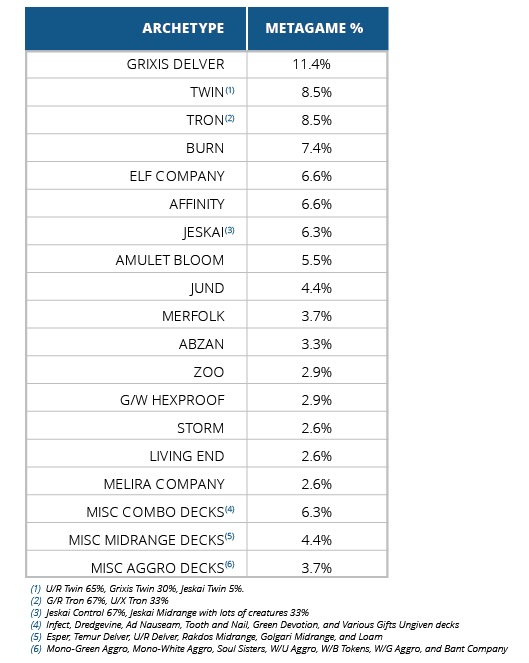
My, how things can change!
It feels like not too long ago the format was overrun by Abzan, with Infect and Amulet Bloom as major players (alongside Twin, but Twin is sort of always a constant pillar of the format). Of course, back then, people laughed at Gurmag Angler – which is now a staple in the most popular deck in the format.
Here’s an example of the Grixis Delver deck that has been far and away the biggest winner of Magic Online during this past week:
Creatures (15)
Lands (18)
Spells (27)

We may not have Treasure Cruise or Dig Through Time, but we do have Tasigur, the Golden Fang and Gurmag Angler as major rewards for filling our graveyards. They typically cost less mana than Tarmogoyf and are often bigger.


Why the split?
Well, Tasigur is a legend, and sometimes it’s nice to have more than one creature in play at a time. Besides, Tasigur’s card advantage ability is important in some matchups while the extra power on Gurmag Angler
comes in handy in others. Drawing one of each is better than two of the same one.
As for the rest of the deck, there are the “good cards” and the “role-players.” Sure, Lightning Bolt, Serum Visions, and Delver of Secrets may be better than most of the cards, but even after you fill up on those you are short of 60. The final slots end up being a diverse mix of cards like Spell Snare, Spell Pierce, Stubborn Denial, Mana Leak, Remand, Deprive, Forked Bolt, Burst Lightning, Faithless Looting, Izzet Charm, Terminate, Electrolyze, Kolaghan’s Command, Cryptic Command, Murderous Cut, and so on.

Of these, Kolaghan’s Command is the newest addition, and from its growing success and popularity it appears to have earned the mantle of format staple. It solves hard problems like Cranial Plating or Vedalken Shackles while also being an excellent answer to Young Pyromancer or Dark Confidant that isn’t dead against combo or control.
An important note on Grixis Delver – it doesn’t actually always contain Delver of Secrets! While the vast majority do, a few players have actually abandoned the blue one-drop for more controlling elements. Why call this Grixis Delver? Because functionally, it’s the same deck. Really, the deck shouldn’t be Grixis Delver at all. It should just be Grixis Delve.
Here’s an example of Delver-less Delve:
Creatures (10)
Lands (23)
Spells (27)

Dragons of Tarkir has brought some interesting new sideboard options to the format.
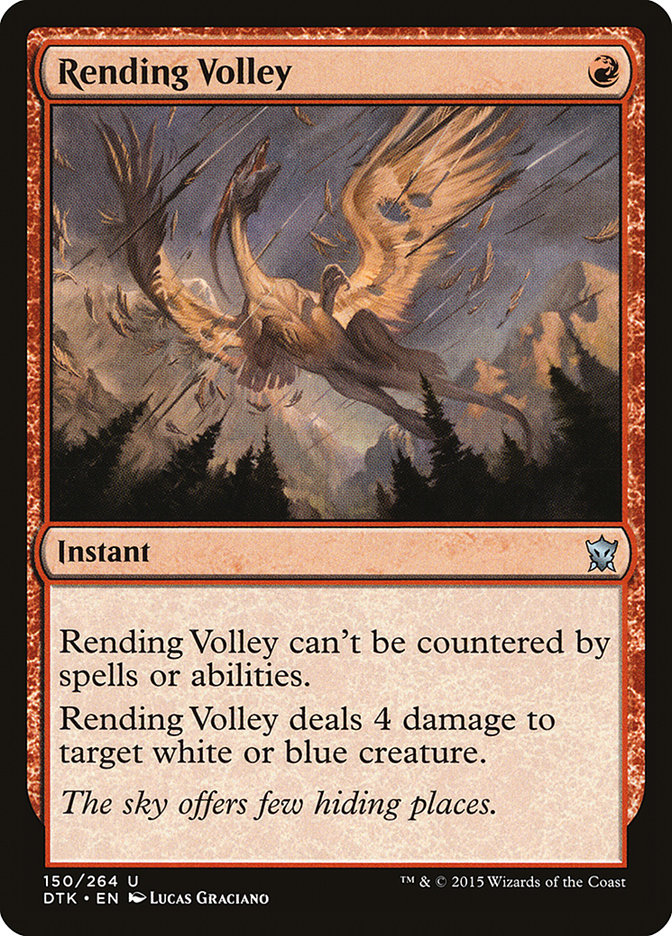
This card was engineered to help fight Splinter Twin, as it does the exact right amount of damage to take out a Deceiver Exarch and cannot be countered. It also happens to kill Restoration Angel and Celestial Colonnade, and is a great card against Merfolk decks.
There is a lot of variation among Grixis lists, so I definitely recommend looking at as many as possible if you are considering playing Grixis yourself. An exhaustive look at the Grixis Delver archetype can be found here.
I have found Tasigur and Gurmag Angler too good to give up black, but occasionally, people will build other Delver decks. For instance, here’s a build with Tarmogoyf and Hooting Mandrills, instead of Tasigur, Angler, and Young Pyromancer:
Creatures (14)
Lands (17)
Spells (29)

While Delver decks have become the defining style of play in Modern recently, they still make up a small percentage of the opponents you’ll actually face. Modern is just too wide-open a format to be sure of what decks you are going to face, so playing an inherently powerful strategy is generally a better idea than a metagame hate deck.
One of the classic ways to be generally powerful is a resilient combo deck, such as Splinter Twin. Regardless of what the other person is doing, most of the time Splinter Twin + Deceiver Exarch is a pretty good combination.
Creatures (13)
Lands (23)
Spells (24)

Splinter Twin has been popular as long as Modern has been a format, and is typically always one of the defining decks. It’s a compact combo that wins out of nowhere, and fast.
Although some players splash black for discard and better spot removal lately, the most popular style has been U/R, though almost everyone splashes green out of sideboard for Ancient Grudge since it costs so little to play one Breeding Pool. Besides, it’s nice to be able to Engineered Explosives for three.
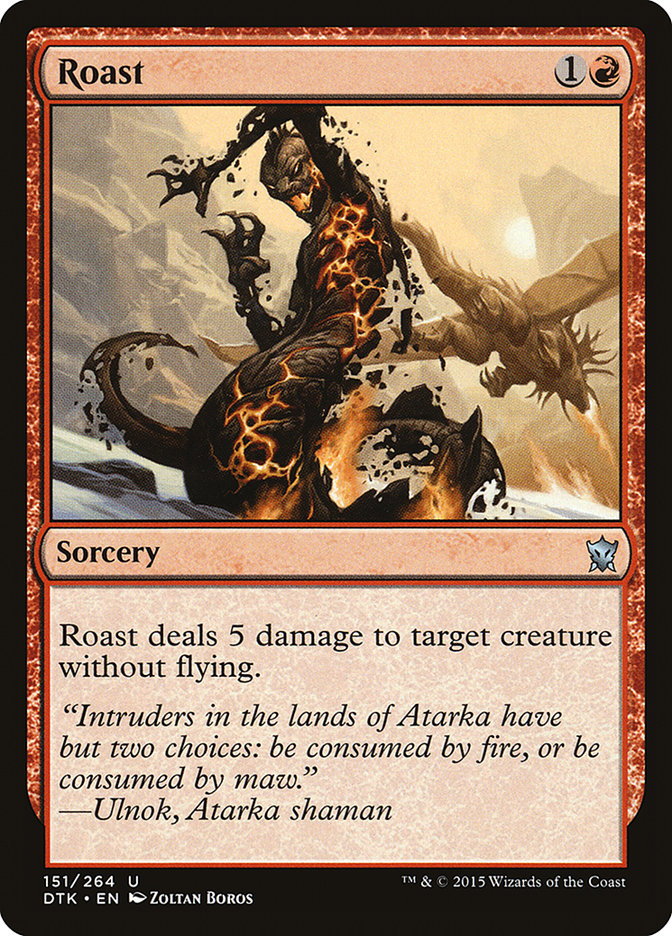
One of U/R’s weaknesses has historically been fatties too big to Lightning Bolt. In the past, Flame Slash has been used in small numbers, but lately the popularity of Gurmag Angler, Tasigur, the Golden Fang, and Siege Rhino (as well as Tarmogoyf growing too big) has pushed people towards Roast in modest numbers.

That’s a lot of Blood Moons in the Delver and Twin lists, and with good reason. Without them, decks built around Urza’s Tower and Valakut, the Molten Pinnacle can be extremely deadly.
First, just to get it out of the way, here’s a list of Amulet Bloom:
Creatures (8)
Lands (28)
Spells (24)

This list hasn’t changed much, recently, but now that it is well understood, it appears to have fallen back down into tier 1.5 status. The fact that it kills so fast makes it impossible to ignore, however.
As for Tron…
Creatures (7)
Planeswalkers (8)
Lands (20)
Spells (25)
- 4 Pyroclasm
- 4 Sylvan Scrying
- 4 Chromatic Sphere
- 4 Chromatic Star
- 1 Relic of Progenitus
- 4 Expedition Map
- 4 Ancient Stirrings
Sideboard

Lately, G/R Tron has been about twice as popular as Mono-U and U/W Tron, using Ancient Stirrings, Sylvan Scrying, and Pyroclasm instead of Gifts Ungiven, Thirst for Knowledge, and permission.
The only new addition here from Dragons of Tarkir is Rending Volley, but there is a super-important card from Fate Reforged that was initially controversial. At this point, however, it seems clear, G/R Tron decks should feature a full set of this little guy:

Like Karn, Ugin is a giant colorless threat that completely takes over the game. Most Modern decks are not capable of fighting back against such a big card, and assembling Tron means turn-four Ugins are commonplace. The printing of Ugin has elevated Tron from a fringe strategy to one of the defining strategies of the format.
Of course, Tron isn’t the only fringe strategy that has received a big boost this year.
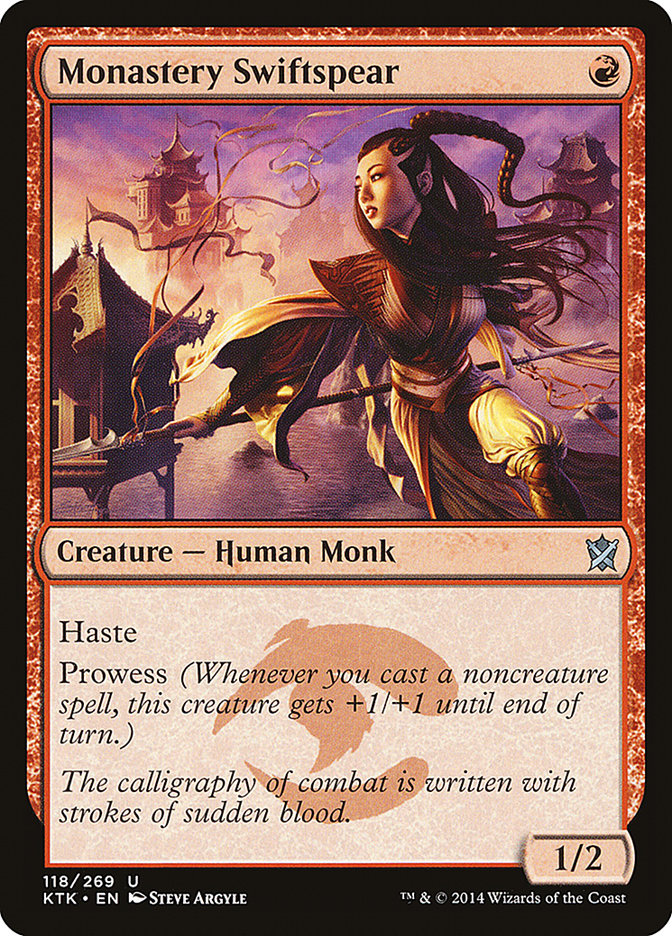
The printing of Monastery Swiftspear, as well as recent popularity of Gitaxian Probe and three-color shockland manabases, has pushed Burn into a defining role in the format. It always seems like this deck gets underestimated, but lately, a lot of people have put up big results with it. Shahar Shenhar played it at the World Championships and Team MTGMint used it to great effect at Pro Tour Fate Reforged.
Creatures (14)
Lands (19)
Spells (27)
- 4 Lightning Bolt
- 4 Lava Spike
- 2 Lightning Helix
- 4 Rift Bolt
- 2 Shard Volley
- 3 Searing Blaze
- 4 Boros Charm
- 4 Atarka's Command
Sideboard

While Eidolon of the Great Revel and Monastery Swiftspear haven’t existed for all that long, the real new addition is this scary card:
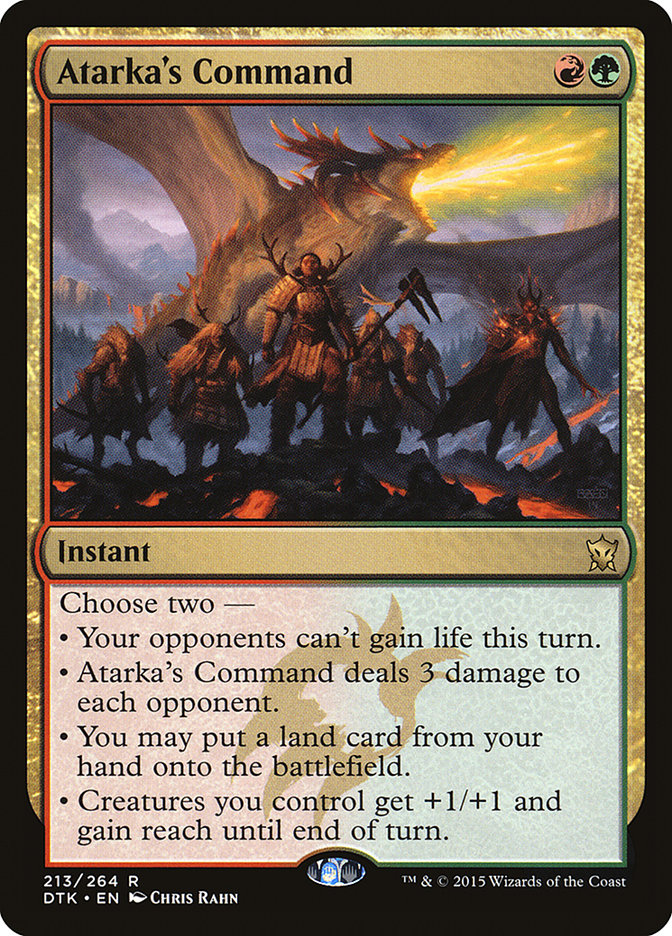
This card has been a major player in Standard the entire time it has been legal, and now it has proven itself a major player in Modern. Skullcrack was already a serious option and Atarka’s Command is a major upgrade, since the +1/+1 to your team option is often worth a couple extra damage. In a burn deck, that is basically like drawing an extra card.
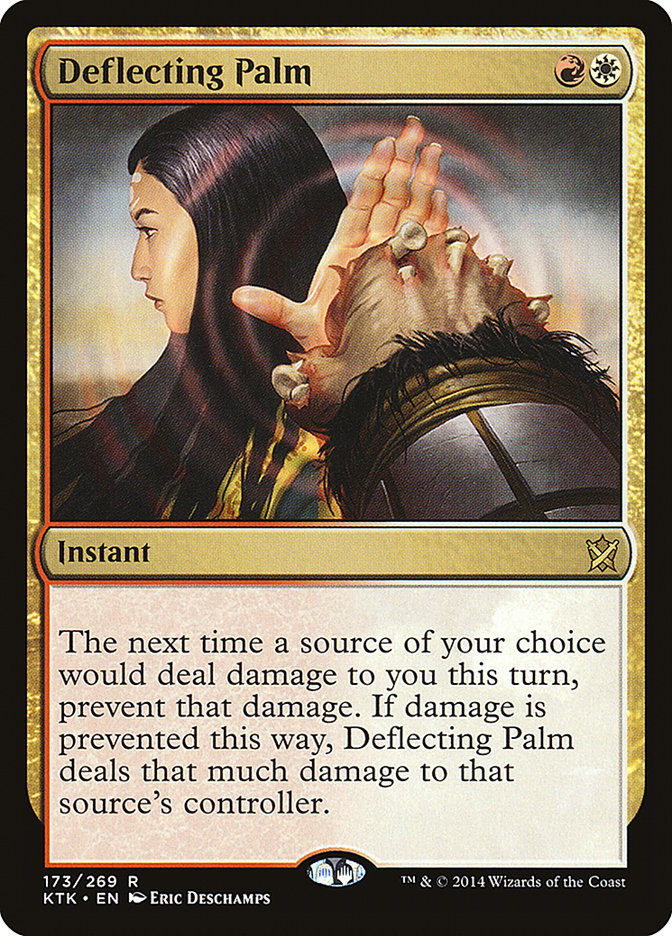
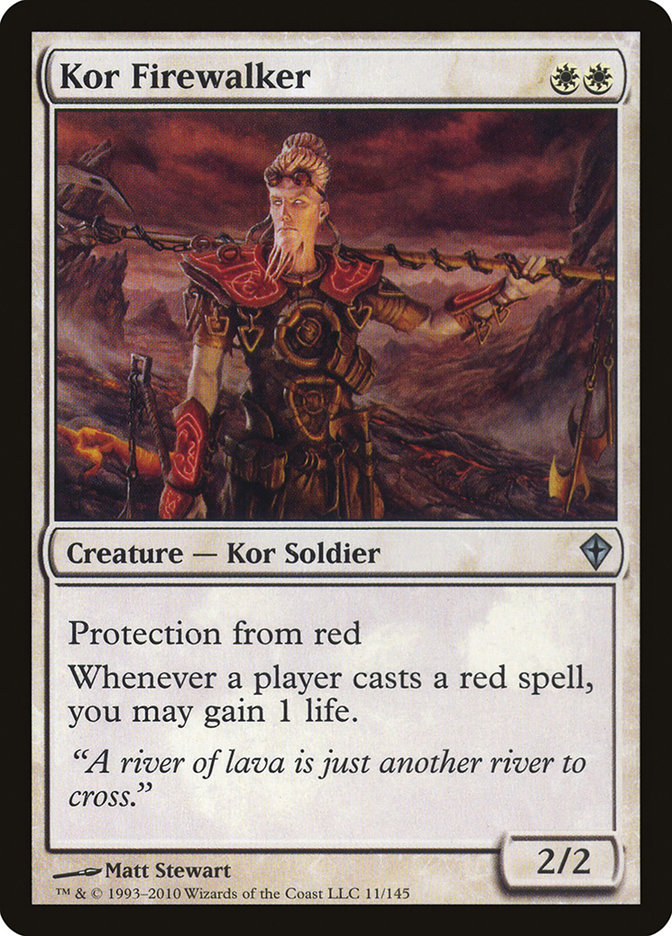
Gotta win the mirror!
Arguably the most important Modern card in Dragons of Tarkir is Collected Company.

Collected Company has spawned several new archetypes, doing a ton of work to try to fill in the gaps left by Birthing Pod’s banning. While initially Melira Company was the more popular approach, Elf Company has overtaken it as the default home for Collected Company.
Creatures (31)
- 4 Llanowar Elves
- 4 Essence Warden
- 4 Heritage Druid
- 4 Nettle Sentinel
- 4 Elvish Visionary
- 4 Elvish Archdruid
- 3 Ezuri, Renegade Leader
- 4 Elvish Mystic
Lands (18)
Spells (11)

While many past Elf decks have been focused on “going off,” this list is much more of an “Attack for 20+ with Ezuri” deck. While it primarily uses Collected Company to assemble a critical mass of Elf synergies to launch a major Overrun attack, it also gets extra value out of the card and out of Chord of Calling on account of its sideboard. Each sideboard creature goes further when you have this many ways to find it.
While the top decks in the format have involved a lot of shake-ups, one of the longest running major players of the format is Affinity. You can hate it out if you want, but a lot of people want others to be the ones to use sideboard slots on it.
Creatures (26)
- 4 Arcbound Ravager
- 4 Ornithopter
- 2 Master of Etherium
- 3 Steel Overseer
- 3 Memnite
- 2 Etched Champion
- 4 Signal Pest
- 4 Vault Skirge
Lands (16)
Spells (18)
Sideboard

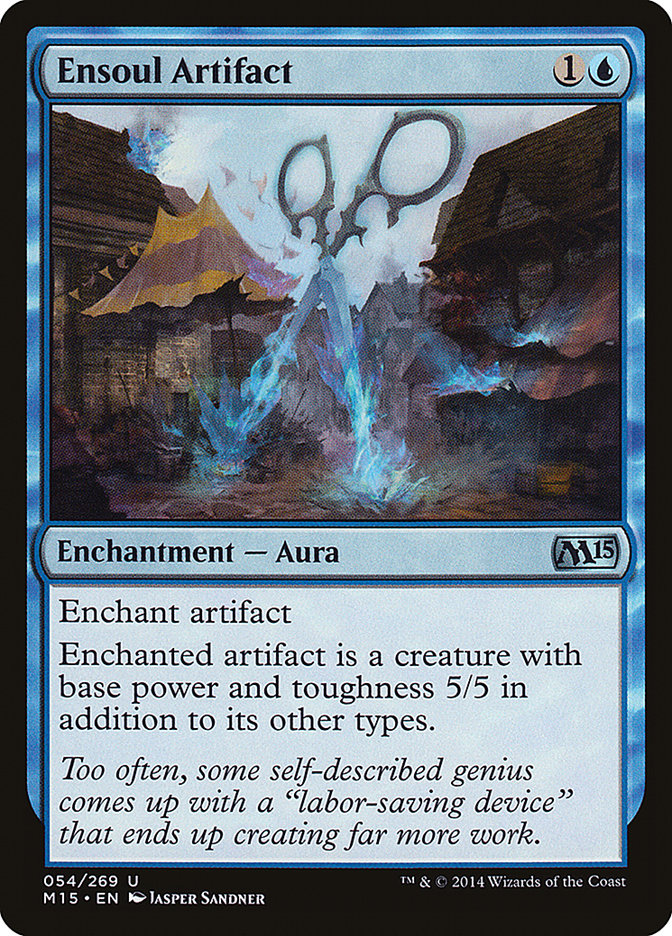
Ensoul Artifact has been tried in various levels of dedication, and it would appear that the things have settled down to a place where most people play two copies, wanting the extra dimensions it offers without going all-in and making ourselves worse against cards like Path to Exile.
The main targets are Darksteel Citadel for indestructible, Vault Skirge for lifelink, or Inkmoth Nexus for a surprise five poison counters out of nowhere. Remember, Arcbound Ravager counters stack with it in a good way.
Another classic of the format (at least since Guillaume Wafo-Tapa popularized it years ago) is Jeskai Control.
Creatures (4)
Planeswalkers (1)
Lands (25)
Spells (30)

It’s hard to build a control deck in a format as wide open as Modern, but players like Wafo-Tapa and Shaun McClaren pull it off by combining the most efficient removal in the format with blue permission and card draw.

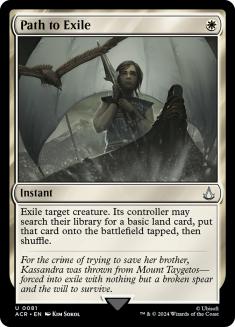
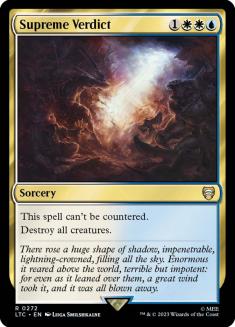
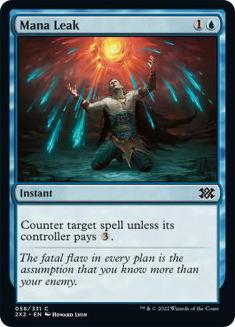
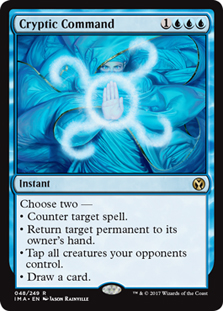
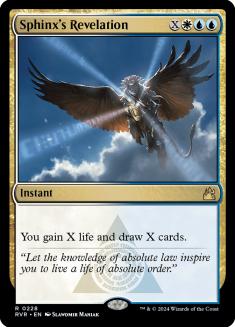
The above list is a very standard build, but there is a lot of variation in the archetype. Occasionally, players will adopt much heavier creature bases, with cards like Geist of Saint Traft, Restoration Angel, or Thundermaw Hellkite. Here’s an example of one of the more creature-based midrange builds of Jeskai:
Creatures (16)
- 2 Aven Mindcensor
- 2 Vendilion Clique
- 4 Snapcaster Mage
- 4 Geist of Saint Traft
- 3 Restoration Angel
- 1 Thundermaw Hellkite
Lands (25)
Spells (19)

Notice the recent addition of this Standard staple:

The ability to kill Tarmogoyf, Gurmag Angler, Tasigur, and Siege Rhino is big, of course, but sometimes it’s nice to have removal that you can use other ways if they don’t draw creatures. It’s kind of funny that Valorous Stance actually makes Pestermite a lot better than Deceiver Exarch in some situations, although Lightning Bolt and Lightning Helix help cover our bases here.
Even among the more pure control decks, it is common for players to utilize exotic card choices opponents are not fully prepared for. For instance:
Creatures (8)
Lands (26)
Spells (27)

Hoogland’s build of Jeskai features one of the most talked-about cards from Dragons of Tarkir.
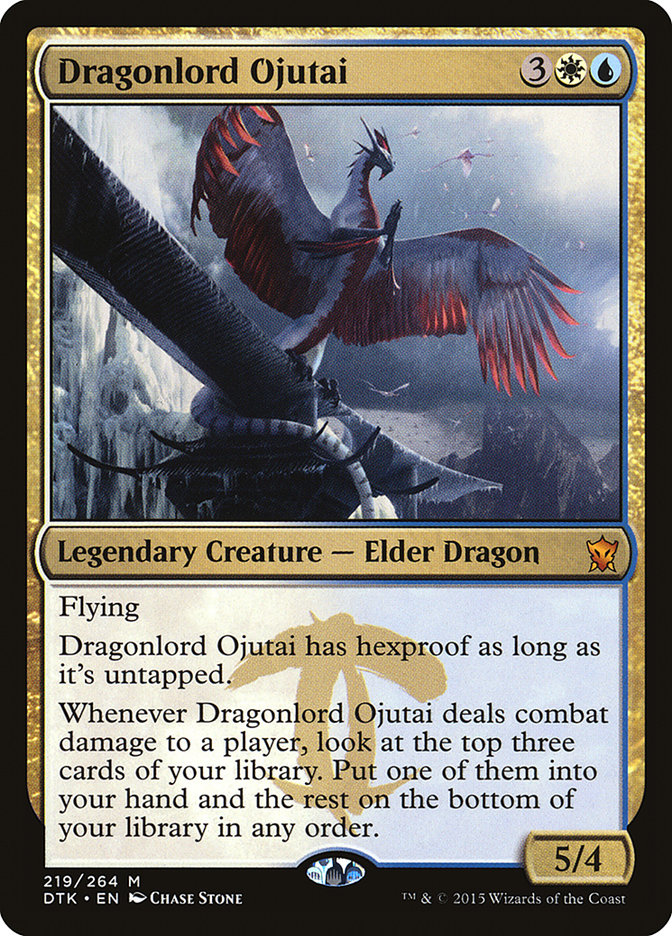
Liliana of the Veil has been dipping in popularity recently, leaving an opening for Ojutai. It’s kind of convenient that Abrupt Decay and Lightning Bolt can’t kill it, though I worry about the recent surge in popularity of Rending Volley.
Speaking of Liliana, remember when Abzan used to be 20% of the format? Now it appears to be just a minor player.
Creatures (13)
Planeswalkers (3)
Lands (25)
Spells (20)

The newest addition to Abzan is this standard staple:
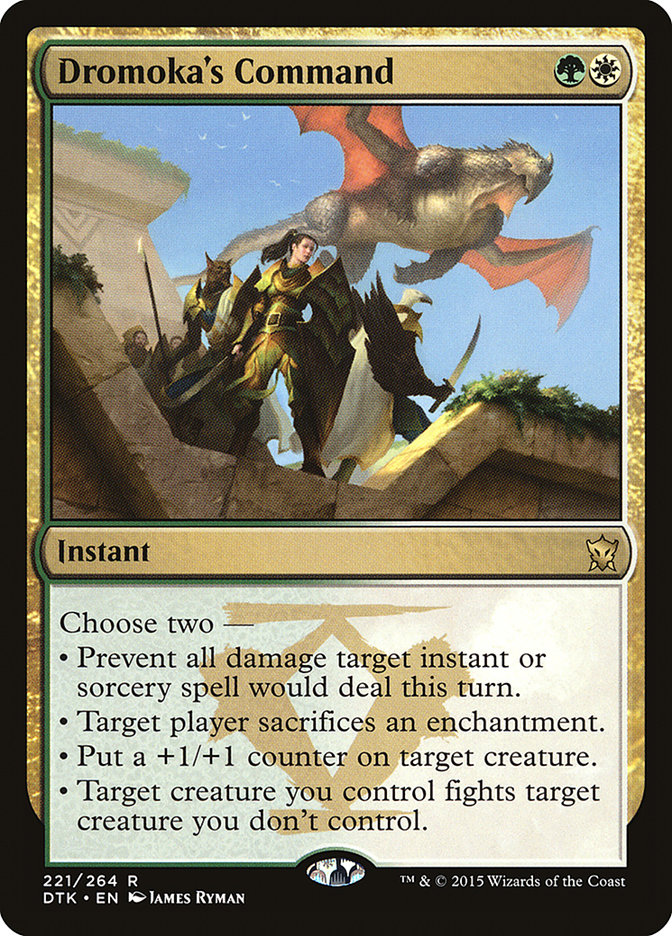
Dromoka’s Command isn’t quite as versatile in Modern, but it is nice to have good answers to enchantments and the card’s versatility is hard to match. The combination of +1/+1 counter and fight is especially important because of how often cards like Siege Rhino, Tarmogoyf, and Tasigur bounce by exactly one. That it also prevents damage from a burn spell is super valuable in our current burn-heavy metagame.
The biggest factor cutting down on Abzan decks has been the surge of Jund decks, which are fundamental so similar that most of the time people play Jund, they set down their Abzan decks to do so.
Creatures (13)
Planeswalkers (3)
Lands (24)
Spells (20)

Red gives us popular favorites like Lightning Bolt and Terminate, but a major source of the recent surge of Jund decks has been how invaluable Kolaghan’s Command has proven. I think we’ve only scratched the surface of the uses of this card, and I expect it will play a major role in shaping what the GP Charlotte metagame looks like on Day Two.
Now that we’ve got a basic framework for looking at the current state of the format, let’s get down to brewing. Should I just focus on tuning Tasigur/Gurmag Angler strategies or should I work on something completely different? Let me know and Monday, we’ll do just that!

